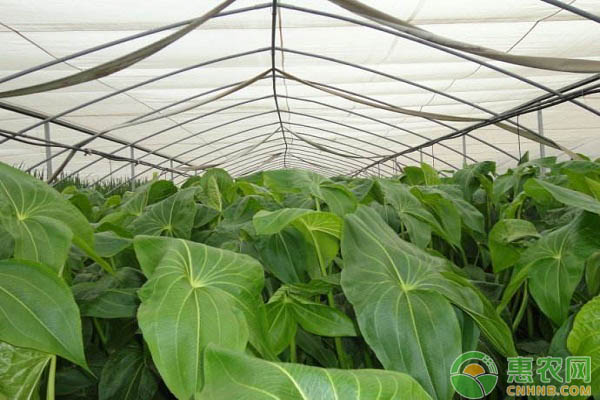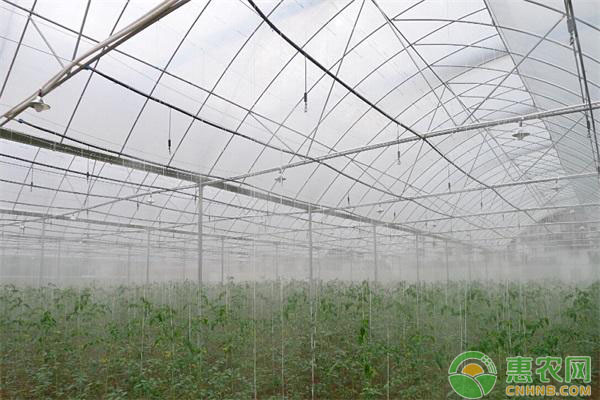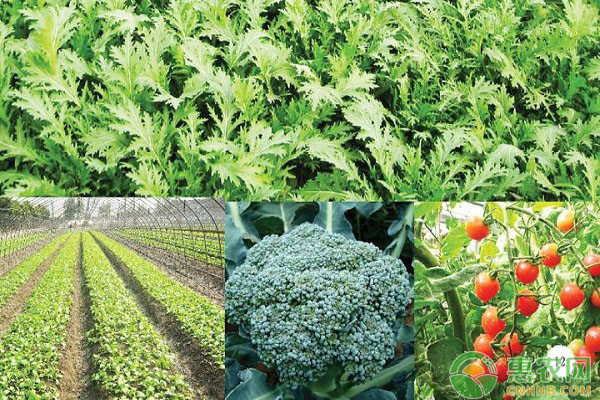The cultivation of vegetable facilities mainly uses vegetable greenhouses to carry out vegetable cultivation. In the process of vegetable cultivation, continuous cropping is a common problem, which will lead to an increase in vegetable pests and diseases. This article is mainly about the continuous cropping hazards and control measures in the cultivation of vegetable facilities.

1. Analysis of the performance and causes of continuous cropping obstacles in facilities
1.1 Facilities and vegetables continuous cropping hazard performance
Facility agriculture is a new production mode under the concept of modern agricultural production, in which vegetable cultivation is the main form of facility agricultural production. In the cultivation process of vegetable cultivation, the continuous cropping hazard is very serious. Continuous cropping is the main cause of the increase of pests and diseases. There are several kinds of hazards arising from continuous cropping. First, soil acidification is severe, and continuous cropping will lead to increased soil acidification. The acidic soil environment is not conducive to vegetable growth. Second, the lack of trace elements, the lack of trace elements is the main hazard of continuous cropping in the cultivation of greenhouse vegetables, especially the trace elements such as calcium, magnesium and sulfur are less, which may lead to malformation and growth disorders of vegetables. Third, soil diseases are aggravated. Due to continuous cropping, various pathogenic fungi and bacteria in the soil will grow seriously, such as tomato bacterial wilt and cucumber wilt. Fourth, the soil has secondary salinization. In the continuous cropping land, the soil salt concentration is very high, generally more than 200% of the ordinary land. The salinized soil has a very negative impact on the growth of vegetables.
1.2 Analysis of barriers to continuous cropping of vegetables
1.2.1 Causes of serious soil acidification.
The main reason for soil acidification is that the amount of fertilizer used in vegetable cultivation is not accurate. In some areas, the use of chemical fertilizers to promote the growth of greenhouse vegetables, especially some physiological acidified fertilizers, is used more, resulting in a decrease in the buffer capacity of the soil and the inability to restore the soil. Its own ion balance ability, so the soil's p H value is repeatedly reduced, acidification is serious. In addition, in the greenhouse production process, natural rain is less, and the accumulation of acid ions in the soil leads to acidification of the soil. According to the research, the pH value of the soil in the greenhouse for five years of continuous planting decreased by 1.5-2 points compared with the general plot. The acidification environment has a great influence on the germination of vegetable seeds and the development of roots.
1.2.2 Reasons for the lack of trace elements in the soil.
Trace elements are the key to the growth of vegetables. In the process of vegetable cultivation, many farmers grow a single variety of vegetables. Continuous planting can selectively absorb nutrients in the soil, resulting in a trace element in the soil. Less in content. Moreover, some users use more NPK fertilizers during the cultivation process, and the supplement of trace elements is insufficient, resulting in the lack of trace elements in the soil.
1.2.3 Causes of serious soil pests and diseases.
Vegetable continuous cropping will lead to a decrease in the number of pathogenic antagonists in the soil, and the root exudates of vegetables also provide good conditions for the growth of various underground pathogens, resulting in an increase in the number and types of pathogens in the soil, plus the management process of the growers. The abuse of chemical fertilizers and pesticides has led to the suppression of beneficial microorganisms in the soil, which has aggravated soil diseases.
1.2.4 Reasons for the increase in soil secondary salinization.
The secondary salinization of soil is mainly related to fertilization. Because the fertilization is unscientific, the content of various elements in the soil is not balanced. For example, the amount of nitrogen and phosphorus fertilizer is more, the potassium fertilizer is less, and the use of trace element fertilizer is neglected. It has a certain influence on the root development of vegetables, which causes vegetables to not absorb more nutrients from the soil, and the environment of the greenhouse is generally closed, lacking the flushing of natural rainwater, the temperature inside the greenhouse is high, and the evaporation of soil moisture leads to the lower layer. The salt in the soil rises and a more serious secondary salinization occurs on the surface of the soil.

2. Ways to control the damage of continuous vegetable cultivation
2.1 Adhere to scientific rotation
In the process of agricultural production, continuous cropping is generally not recommended. Rotation is the basis for crop growth. Scientific and rational rotation can reduce soil deterioration and reduce pests and diseases. It is also the main way to break through the continuous cropping of vegetables. For example, in the process of vegetable cultivation, water-and-dry rotation and dryland rotation can be adopted. The effect of water and drought rotation is better, water washing and salting can be achieved, and microbial community objectives can be optimized. It is good for soil acidification, salinization and various diseases. Inhibition.
2.2 Adhere to scientific fertilization
Excessive use of chemical fertilizers is the main reason for the continuous cropping of vegetables. In order to improve the growth level of vegetables, it is necessary to effectively control the amount of chemical fertilizers, formulate fertilization, and provide nutrients needed for vegetable growth. At the same time, in the process of fertilization, organic fertilizer should be applied, the amount of chemical fertilizer should be reduced, organic fertilizer and chemical fertilizer should be combined, organic fertilizer should be used to improve soil structure performance, and some fertilizers can be used to provide trace elements for vegetables. At the same time, the combination of organic fertilizer and chemical fertilizer can also effectively control the lack of nutrients in the land caused by continuous cropping, optimize the pH value of the soil, and match with the inorganic non-separation to ensure balanced nutrition and improve the plant's resistance.
2.3 Adhere to biological control
In the process of continuous vegetable cultivation, the phenomenon of pests and diseases is more serious. The biological control method is a green and recyclable prevention and control method widely promoted. It has a good control effect on the pests and diseases caused by continuous cropping, and does not cause harm to vegetables. The beneficial microorganisms can be used to deal with some pathogenic bacteria in the soil, cultivate beneficial microorganisms, encroach on the nutrition and space of the pathogenic bacteria, and the living space of the pathogenic bacteria is compressed, thereby realizing effective prevention of pests and diseases. At present, the more common methods are to introduce antagonistic bacteria and inoculate beneficial microorganisms, which can increase the number and role of soil microbial populations.
2.4 Controlling the greenhouse environment
2.4.1 Control lighting.
Light conditions are the focus of vegetable cultivation, and are also a prerequisite for ensuring healthy growth of vegetables, especially in the early spring and early winter, low temperature, insufficient light, affecting photosynthesis of vegetables, and insufficient light, which will lead to environmental comparison in greenhouses. Dark, providing conditions for the occurrence of pests and diseases. In this regard, it is necessary to control the lighting conditions during the cultivation of the facility vegetables. Generally, a drip-free film with good light transmission is selected, and a reflective curtain can be provided to maintain the cleanness of the film surface, which can improve the light level.

2.4.2 Humidity and temperature control.
Humidity and temperature are important parameters in the greenhouse. In the process of humidity and temperature control, it is necessary to actively create an environment suitable for the growth of vegetables, and to prevent high humidity, high temperature and other environments, and to prevent the occurrence of pests and diseases caused by continuous cropping. For example, in the process of vegetable cultivation, the number and total amount of watering should be controlled. If it encounters bad weather, such as heavy rainfall, it should be drained in time to prevent the formation of waterlogging disasters, especially to avoid large amounts of underwater water. Infiltration into the soil, leading to rotten roots of vegetables.
Money Safe,Electric Fingerprint Safes,Bank Digital Fingerprint Safe,Big Fingerprint Home Safes
Ningbo Reliance Security Technology CO.,Ltd , https://www.reliancesafes.com